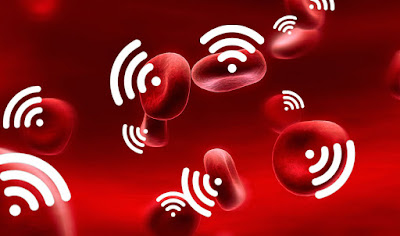 |
| Conceptual illustration by Yuen Yiu, staff writer Image credits: zhouxuan12345678 via flickr/CC BY-SA 2.0 |
Electronics small enough to fit inside cells may one day help scientists track individual cells and monitor their behavior in real time, a new study finds. These new devices could help analyze diseases from their origins in single cells, researchers said.
The new electronics are microscopic radio-frequency identification tags, which are essentially bar codes that can be read from a distance.
An RFID tag usually consists of an antenna connected to a microchip. A nearby reader known as a transceiver can emit electromagnetic signals at the tags, and the tags can respond with what data it has stored, such as its identity, when and where it was made, how to best store and handle it, and so on. Many RFID tags do not have batteries -- instead, they rely on the energy in the signals from the transceivers.
These tags are already being used in many applications today, including key cards, toll passes, library books and many other items, but the typical RFID tags are millimeters to centimeters in size. The new microscopic tags in comparison are only 22 microns wide each, or roughly one-fifth the average diameter of a human hair, making them the smallest known RFID tags, the researchers said. They detailed their findings online July 26 in the journal Physical Review Applied.
Tiny Electronic Tags Could Fit Inside Cells, Charles Q. Choi, Inside Science
Comments